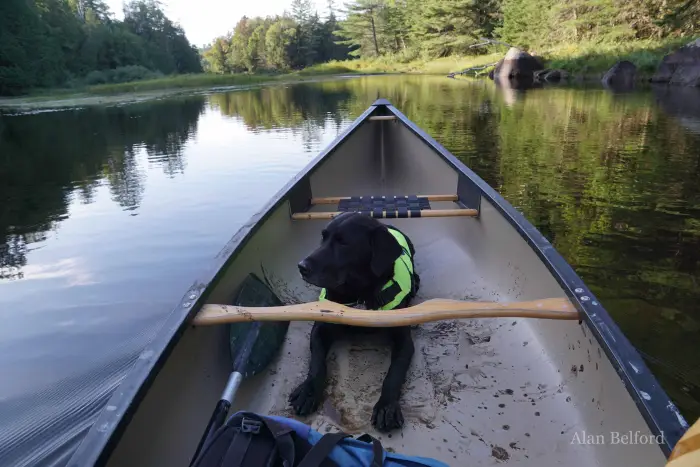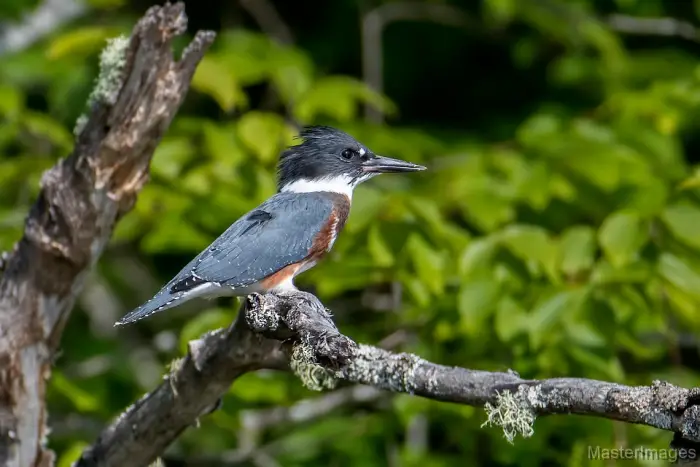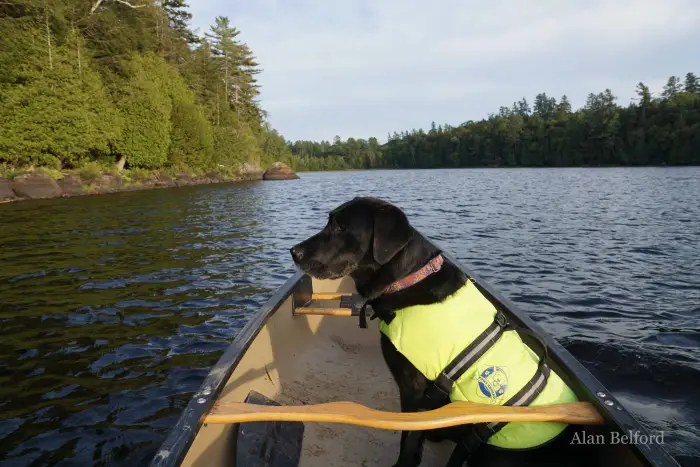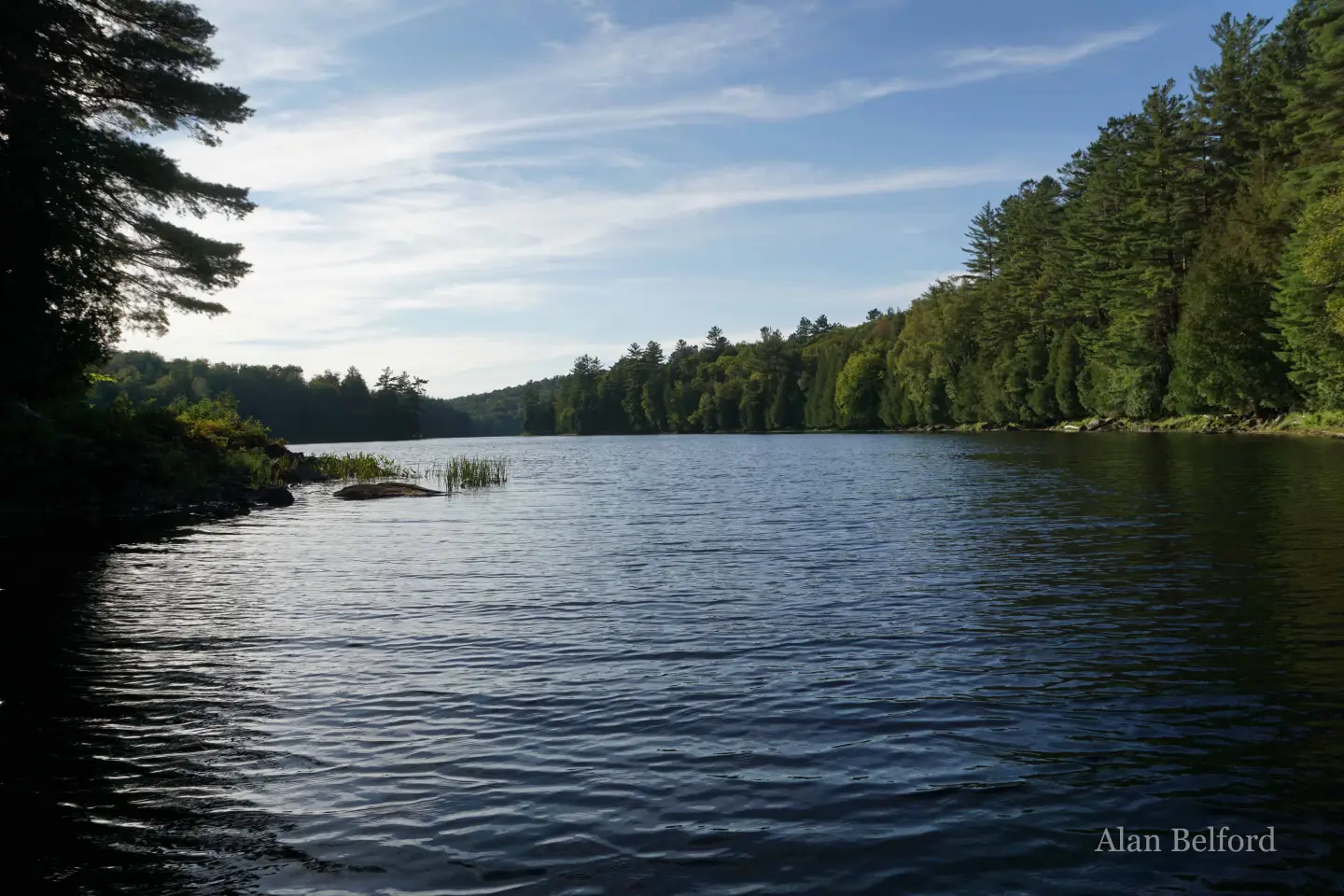A Muddy Put-in
After toting my canoe down the Sucker Brook Trail at the Adirondack Interpretive Center (AIC) in Newcomb, a mucky put-in wasn’t going to stop me and Wren, my dog, from getting on the water. And Wren was more than happy to slog through the mud, seemingly taking half of Sucker Brook into the boat with her, adding to the mess by lying down in the muck she transported.
We set off on the water and began to wind our way along Sucker Brook, and I soon realized we would need to vacate the boat to get beyond a shallow set of riffles blocking our way to Rich Lake. That did give me a chance to let Wren out on a gravel bar where she could rinse off and where I could clean some of the muck out of the boat before it became worse and got all over my gear – although much of it would have to wait until we finished our paddle. Wren was happy for the chance to wade in the water and I walked the boat through the shallow stretch so we could resume our paddle, negotiating our way around the rocks on Sucker Brook, and managing to briefly get lodged on one that lay hidden just below the dark surface of the water.

Exploring Rich Lake
We began to paddle the perimeter of Rich Lake and I made a point to search for the canoe launch along the Rich Lake Trail to see if it was less muddy than the launch we had used. It looked much drier than the launch along the Sucker Brook Trail, so I made a plan to take-out there once we were finished.
My errand complete, we settled into our usual paddling routine – Wren watching the scenery or dozing, sometimes with her head on the yoke, and me on the lookout for birds on the early fall afternoon. I soon had a list of species that included Hairy Woodpecker, Great Blue Heron, Northern Flicker, Common Raven, Eastern Phoebe, and Red-eyed Vireo. Here and there small groups of Black-capped Chickadees called from the trees along the shoreline, and a Belted Kingfisher chattered as it flew from perch to perch. I also heard my first Common Loon of the trip – tallying three loons by the end of our paddle.

A short distance further along, I heard the distinctive hoots of a Great Horned Owl – a female to be precise – coming from the north side of the lake. I eased the canoe toward the shoreline and listened to the muffled hoots disturb the late afternoon air for a few minutes before I moved on.
The Beginnings of fall
I could still hear an occasional hoot on the breeze as I left the shoreline, but for the most part the trip was quiet – the mark of the onset of fall and late in the day at that. And so we began to explore the nooks along the peninsula which occupies the center of the lake, noting the trees which were beginning to change from summer green to the golds, reds, and oranges of autumn. Initially these changes are subtle, but the landscape will soon explode with vibrant colors as fall cold fronts usher in the transformation. And the shadows of afternoon which soon became the shadows of evening showed off the soft changing colors as we went.

We continued our loop of Rich Lake, listening to the calls of Common Loons and eventually passing along the beach – a great place to swim for anyone in the area. As we did so, Wren immediately sat up and sniffed the air excitedly as if her love of beaches had somehow set off an alarm in her head. She looked expectantly as the shore, leaning out of the boat toward the beach as if doing so would somehow transport her to play in the sand rather than to remain in the confines of the canoe.
But we did not stop at the beach – but began to loop back to the take-out — I didn’t want to be caught on the water in the dark. As we looped back, we again passed the hooting Great Horned Owl and this time I could hear both the male and female owls dueting – announcing that this patch of forest was their territory. Once again I paused to listen as they punctuated the quiet air with their hoots.

As planned, I returned to the take-out along the Rich Lake Trail and I was happy that it was not nearly as mucky as where we had put-in. I unloaded my gear and tramped back to the car, returning for the boat which I first rinsed out before toting it up the trail. Anyone launching a boat from the AIC will need to be aware that any put-in requires a carry – so it might be helpful to bring along a lightweight boat or a muscular friend.
The hard work of the carry over, I lashed the boat back onto the car and we set off in search of a place to camp for the night.
Fall offers great opportunities for paddling and outdoor exploration. Plan your trip today and check out our lodging and dining pages to learn more.




